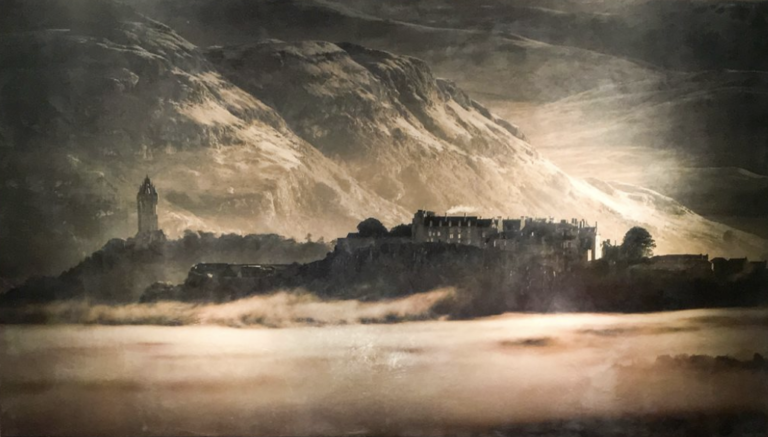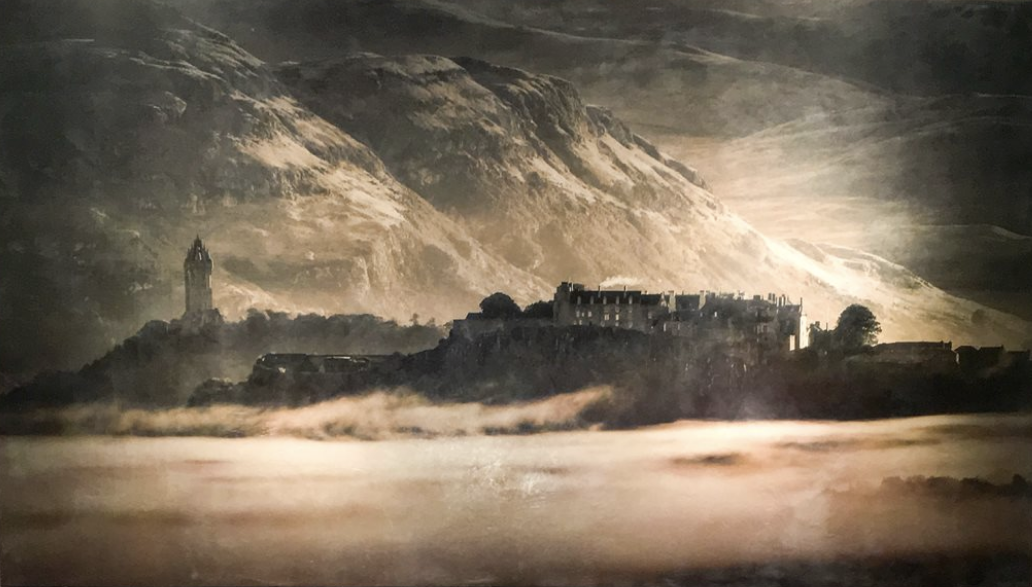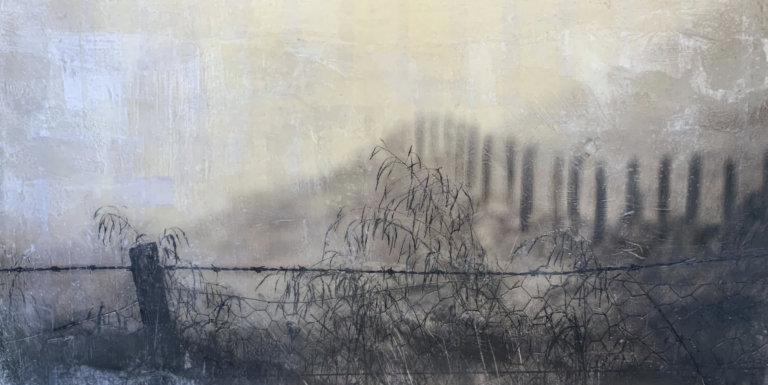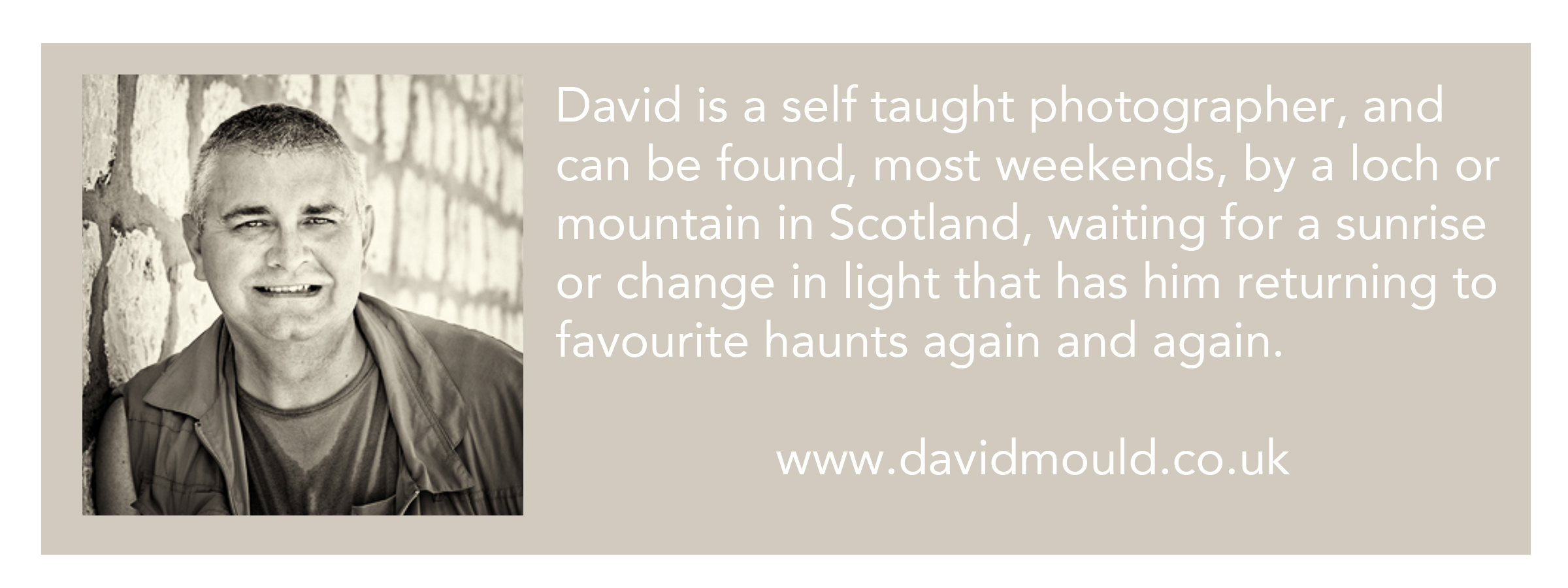Meet David Mould.
I am frequently in awe of many of my students. And David Mould is just killing it these days. He lives in Scotland and has found a robust market for his work. Every time he posts in the our Private Alumni FB page, the comments come flowing in on how beautiful his work is.
It’s been some time since I did a student highlight and I wanted to introduce you to David and his work.
Below you is a short interview I did with David. Enjoy. And make sure to check out his web site to see more of his work.
What is your work about? How do you describe the feeling you want to communicate?
With regard to my photography, it is about showing an emotive, familiar landscape view, but attempted it from a slightly different angle than the norm and expected. With regard to the encaustic element it is about adding and elevating the already emotive image to a higher level by means of producing intrigue through a visual, tactile and ethereal experience, by the addition of a textured encaustic medium that may be unfamiliar, but hopefully, intriguing and appealing.
Tell me about the progression of your work. Where did you start and where would you like to go?
Ironically, as much as I say to people that you need to feel and experience photo encaustic works in the flesh, I fell in love with it online, recognizing, through my mentors, the elevation that it gave to an already stunning image, and felt that this was the addition that my photography needed to differentiate it from the next guy. I then had a six-month period of self-study where I followed online web pages, books and videos to get the general idea of process and form. I realized that what I was doing was appealing as I already had several non-commercial pieces loved by friends and family. With this in mind and the encouragement of peers and friends, and with the advance to retirement and the opportunity to realize an artistic retirement plan spurred me to formalize and make my process truly archival in order to rid myself of the concerns of longevity in my pieces if I was to commercialize them. I then, having reached a level of skill with wax, attended a course with a great photo encaustic artist Pete Kelly, where I spent two days fine tuning my enthusiasm and technique. One thing that I learned from that time, and I feel is very important for longevity, was to learn from someone with a style and technique close to what you want and what you think best suits your photography… I have since tried many different techniques and find myself defaulting to my basic training method as I loved Pete’s, and latterly, Clare’s work, methods and results.
Clare O’Neil provided me with the technique and guts to go big, with the most popular of my works now being 5×3 foot in size…
I think this is where the future lies for me because not only is it more satisfying from a personal perspective, possibly as I also build the panels, being a frustrated carpenter), but it is commercially more Impactful and readily accepted, and the Gallery loves big!!
What is drawing you to one-of-a-kind work?
I had initially been happy to produce one off pieces for sale, and was pleased with the work that was selling, until I became used to the gallery system, where the pressure quickly ramped up to produce limited edition large pieces i.e. 5ft x 3ft… not an insubstantial undertaking, and slightly stressful to say the least. I then entered a self-analysis internal monologue about market forces versus artistic integrity. I reconciled, with the help of the gallery owner, surprise, surprise, that although the pieces were an edition of ten, all, from an encaustic perspective were bespoke and unique, and all were purchased in the knowledge that there were nine others similar but individually unique in their expression. And I have to say, having now spoken to the recipients of several of these pieces, and seeing their delight with the results, helps to balance my artistic integrity dilemma. The internal monologue continues…
What has been your path of experimentation with different aspects of working hand-on. Explain your process of exploring different mediums. What has worked? why? What has not worked? why?
The need to provide a truly archival, bespoke and quality piece has always been at the centre of both my experimentation and research. I now feel free of stress that I, to the best of my knowledge and understanding, produce truly future proof pieces of art. I think this stems from the fact that I, and sometimes the public, now doubt photography as an art form in its own right.
This I feel spurred me on to produce as much from scratch, from the panels I build myself to the mixing of media and personal touches. One benefit is that you then know each individual piece from the ground up and each is unique in the build and the finish, and strangely loved much more than any piece done on a manufactured panel. I understand the appeal of the pre-made panels from a time and convenience point of view, but commercially, financially and if you have the skills, building your own gives you a much better attachment to the piece, especially if you have your images printed by a third party.
So not only has building panels made a big difference, but also finding a printer that gets what you are doing, my printer is integral in my process. James has seen my finished pieces and can use his enormous printing experience and knowledge of the papers to recommend and advise in an area that is the devil’s own profession.
With regard to finding mediums, as I have said, learn from others, experiment, it took me a year to realize the a 6:1 ratio of medium was what I liked for what I wanted. I also experimented with pastels, oils, graphite, etc, but kept coming back to plain medium with the only thing changing being my use of different techniques of texturing dependent on the size, feel, depth of tone and contrast in the image etc… once again realizing that the photograph was the passenger, and the encaustic process the vehicle.
The future is more learning, I am working on encaustic added to tiles, making triptychs, different and interesting crops, and trying, once again to add more color to the mix.
I think the main thing that I have learned in this process is that, if you don’t know, ask… the answer is out there, and all the people I have asked are only too willing to help.
 How do you see yourself in your work? Do you feel there will be ‘more of you’ if it’s more hands-on?
How do you see yourself in your work? Do you feel there will be ‘more of you’ if it’s more hands-on?
That’s an interesting question… I have always doubted my ability and devalued my artistic potential. Previously, I struggled to accept the fact that all I do in my work is all mine, previously it felt as if a was pulling elements together with little value to make a commercial piece, not acknowledging the ‘art’ in the vision, the photography, and the encaustic elements that I had produced. I remember being introduced as an ‘artist’ within the gallery for the first time and feeling a bit of a fraud and a touch embarrassed
More recently I now feel that producing the entire work, apart from the print, the panel etc takes the hands on element to a different level, so much so that I reduced the cost of a piece that I had produced on a prepared commercial beech panel, feeling it was less than what I had intended… ironically the panel was much more expensive than my self produced pieces!! I do feel as my work sells, I am learning to accept accolades and accept the ‘value’ of my work realizing I have learned so much from so many and I am now putting all of that into my work.
What’s it like in Scotland showing photo encaustic work? How do people react?
I think it is safe to say, I am one of the first photo encaustic artists in Scotland, there are some encaustic artists and seem to do well. At first it felt it as if I was just adding an additional element to photography… I mean, there has been an explosion of landscape photography in the last few years and the marketplace , and online is saturated with exceptional photography created by some excellent photographers… my pieces seem to elevate themselves and differentiate themselves to a different level, whether it be creating the emotion through the tactile feel of the work, or the initial image itself, both seem to work on a level where they complement each aspect and make the piece more than just a photograph… I think this is the case where the client is buying a memory of a view or a location, I think the challenge comes when trying to sell the medium of encaustic as the main element in the piece, this I have done with smaller, more intimate works of boats and trees, where the location is indistinct and the medium adds to the artistic element of the photography… so, in answer to the question, there are different reactions to the work, one of an interesting addition to a memorable scene and another of an unusual, different, interesting new tactile piece of mixed media art.
Be well….be creative,
LIKE THIS POST?
Sign up for my blog updates and never miss a post.



Great post, thanks Clare. I’ve been following David’s work for a while now and love it, only wish I could see it in person. One day when I next visit family in Scotland I may hopefully get the chance. You are both truly inspirational to us who are yet trying to “find their way” – Thank you
Thanks Cinny. I know…..I too wish I could see his work in person. Every time he posts something I’m in awe!
Oh, David, these are so beautiful! I miss seeing your work on fb. Also, what a functional, lean, yet communicative website you’ve built. Great presentation. I’ve loved your encaustic and how you work the wax, but now I see you’re just a flat-out amazing photographer, too. Congrats.
I agree, he is truly amazing.
Great interview Clare
Thanks Kay!
Fabulous work
Great interview, Clare! I’ve been admiring David’s work for several months now trying to deconstruct how he does it! It’s nice to be able to get to know him a bit more. Makes his artwork all that more special.
He does indeed have beautiful and striking work Bea. Glad you were able to connect a little more to how he creates!